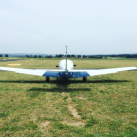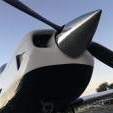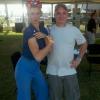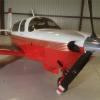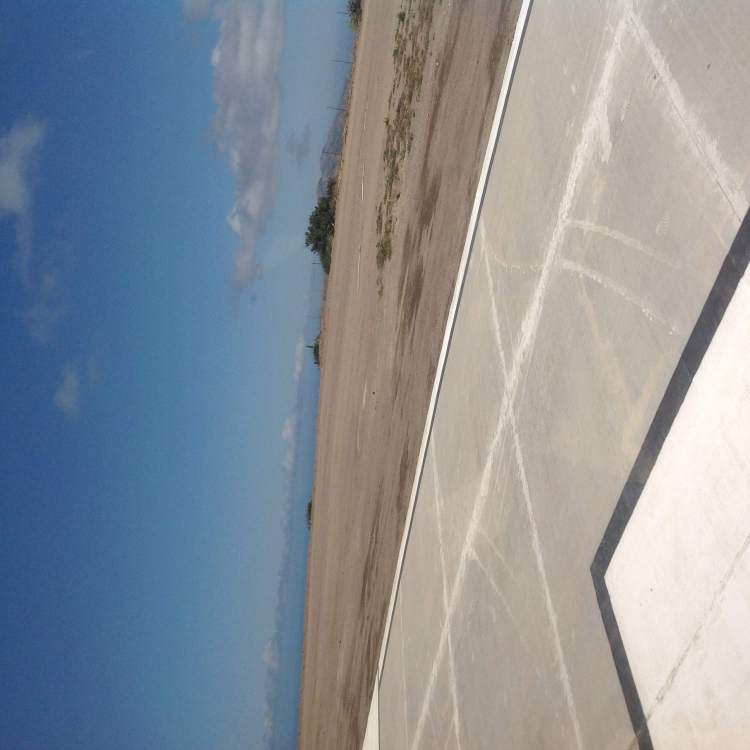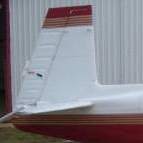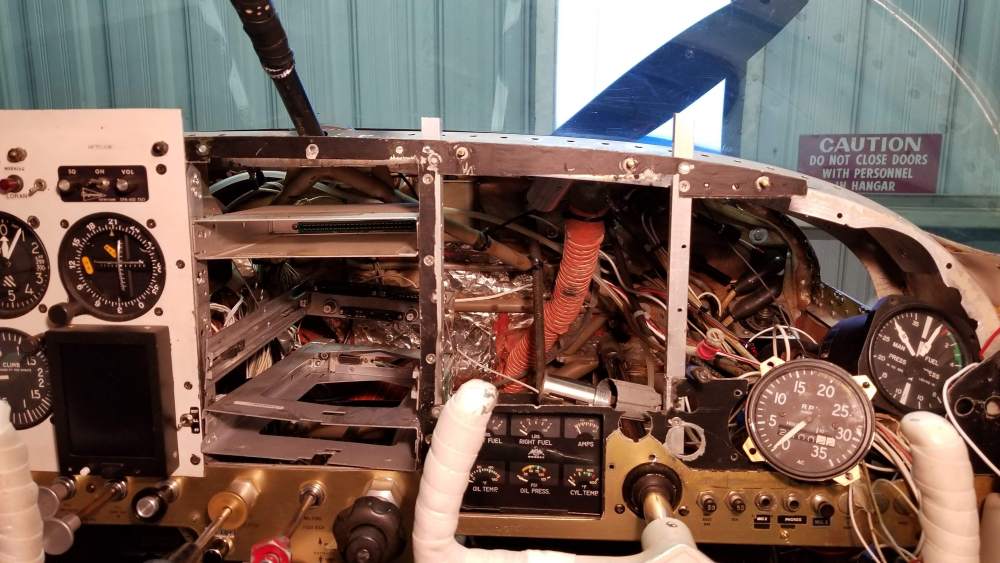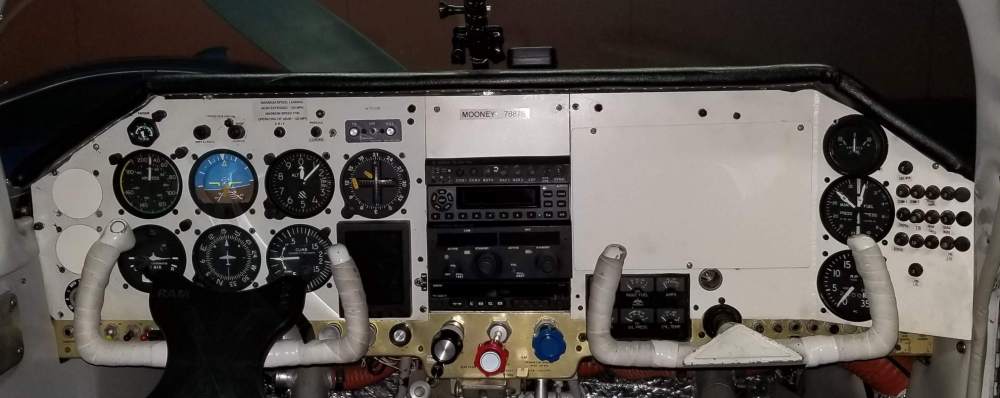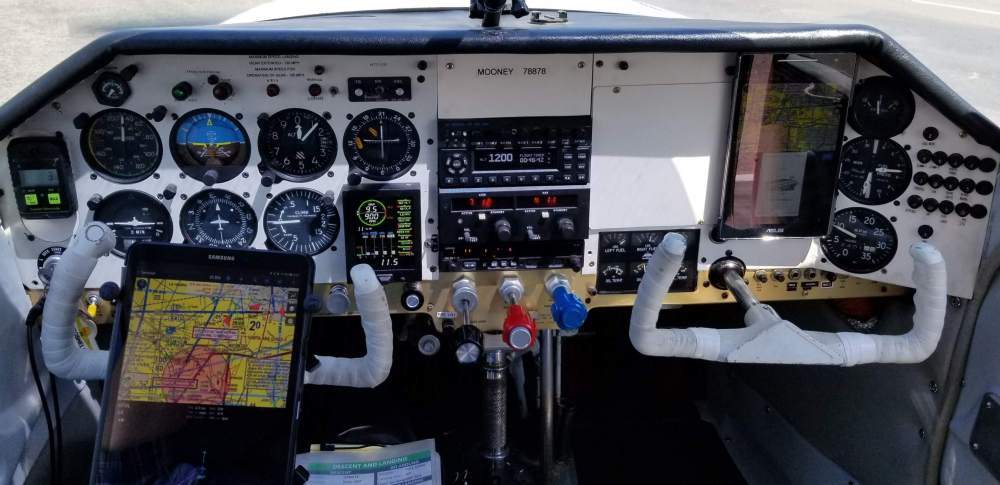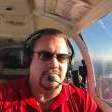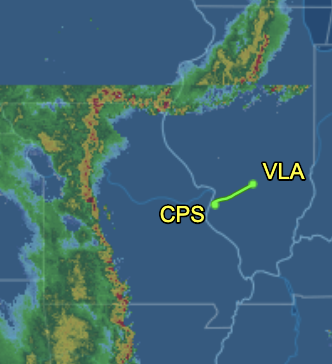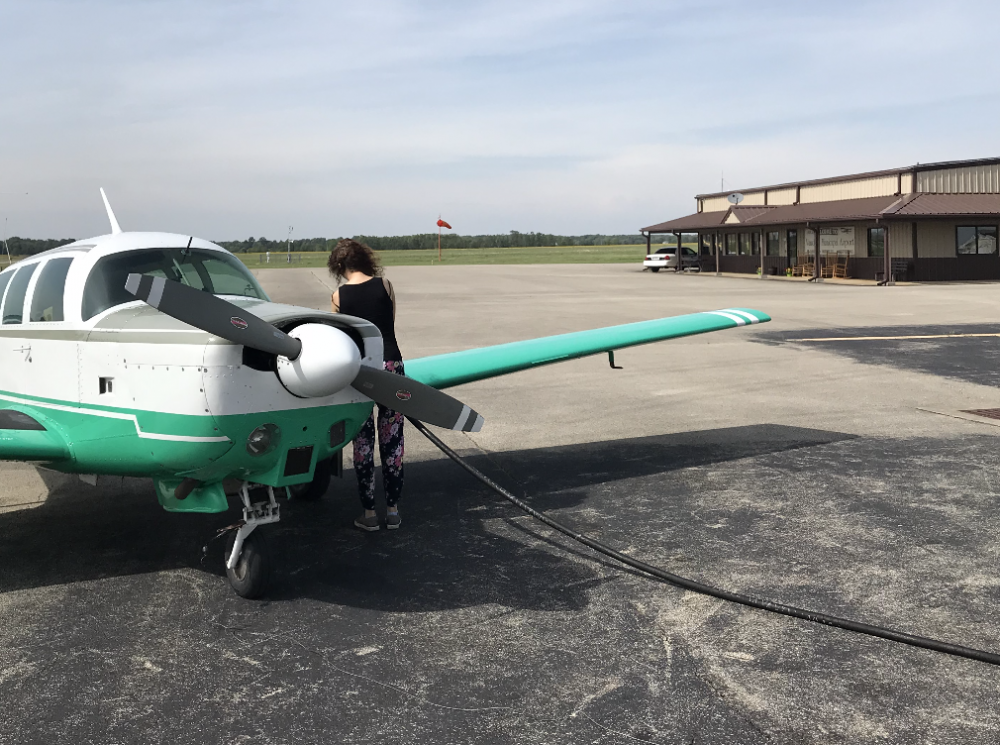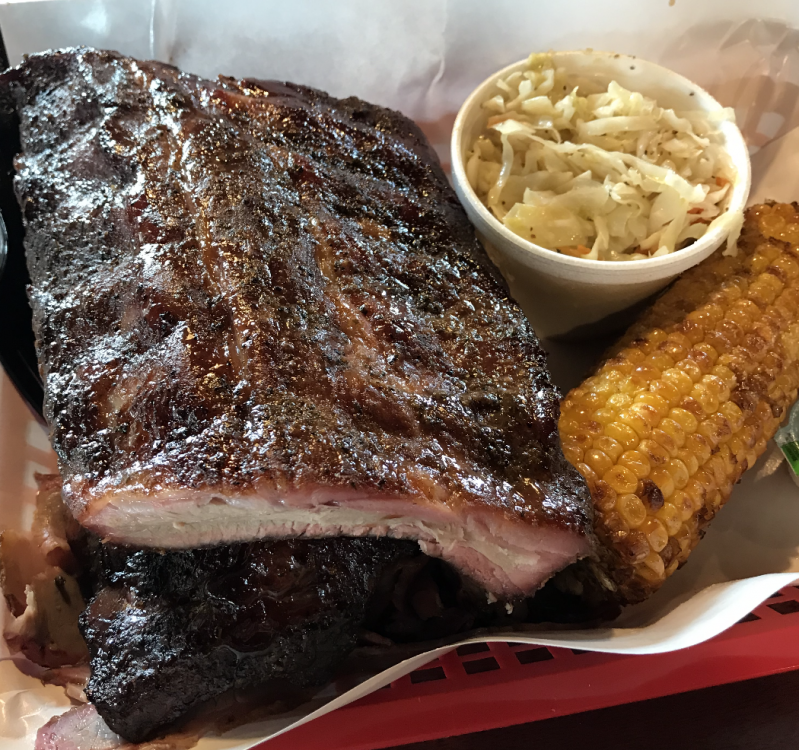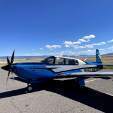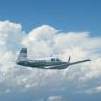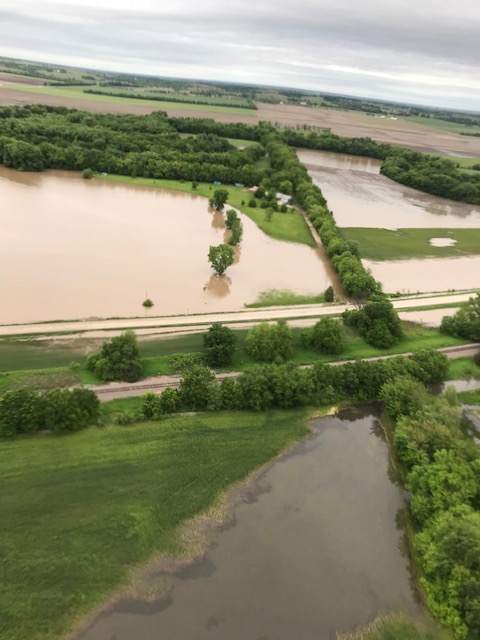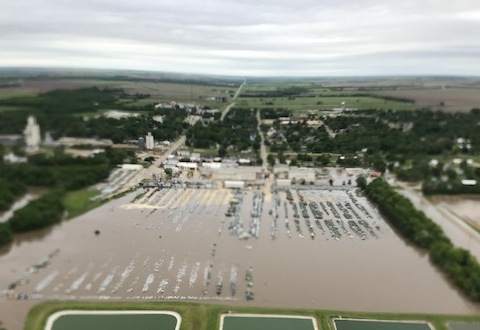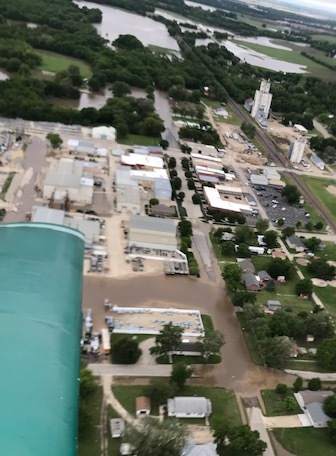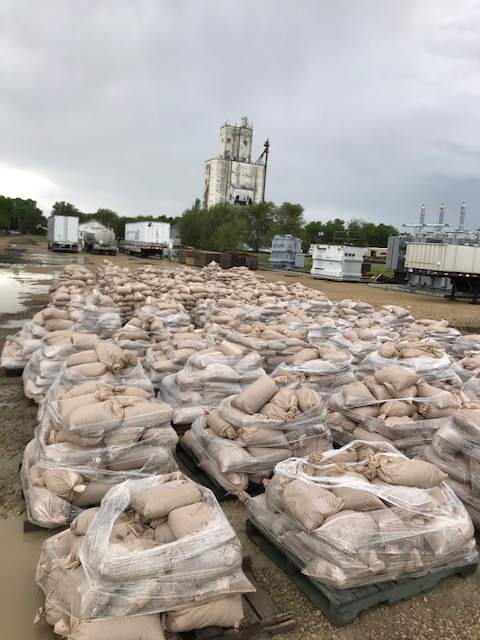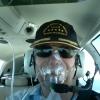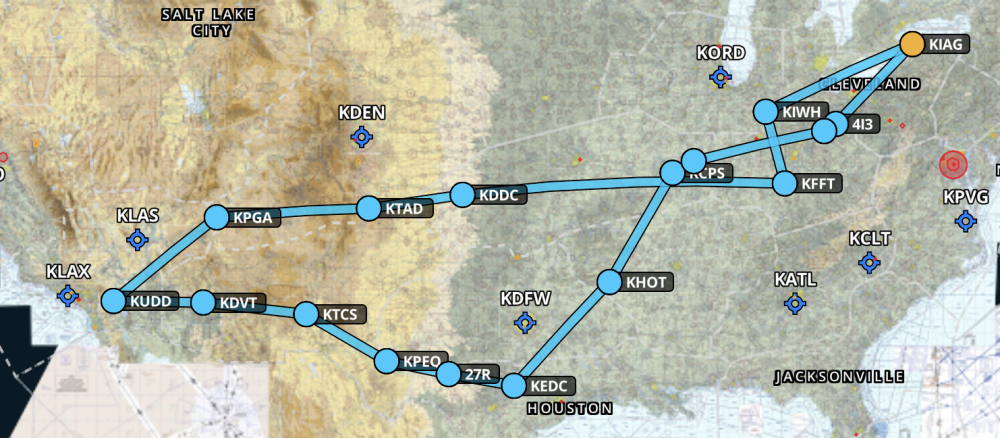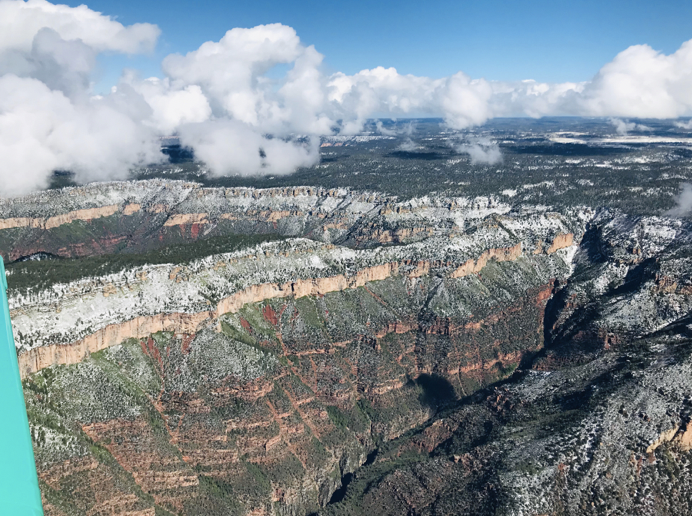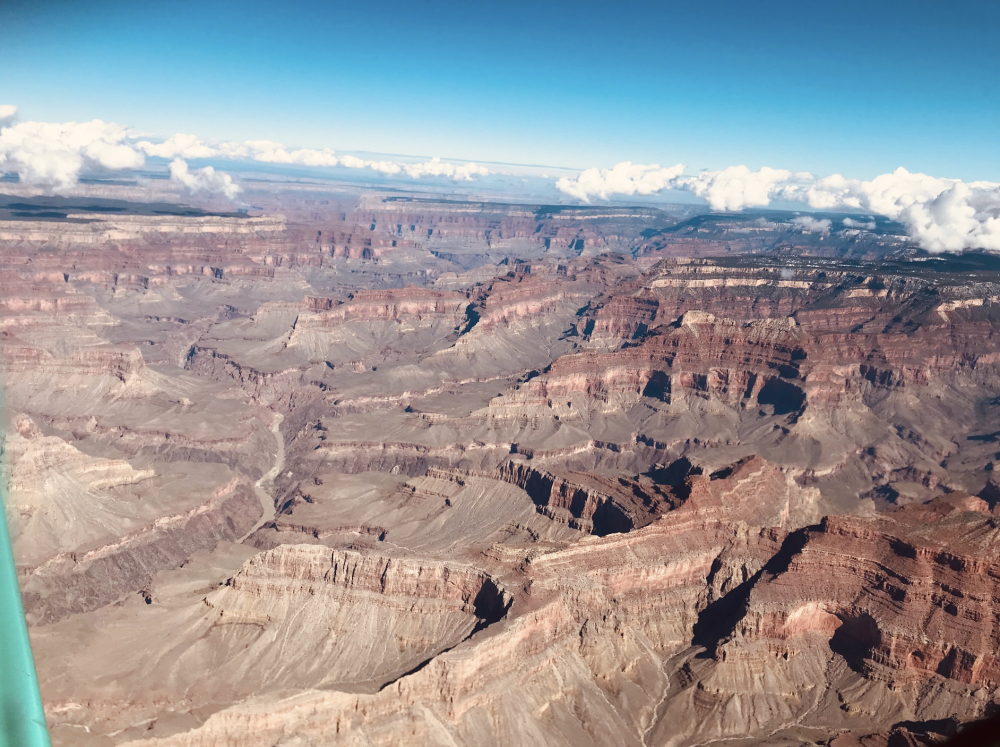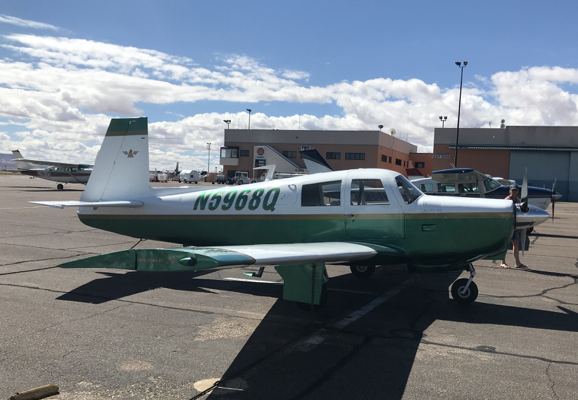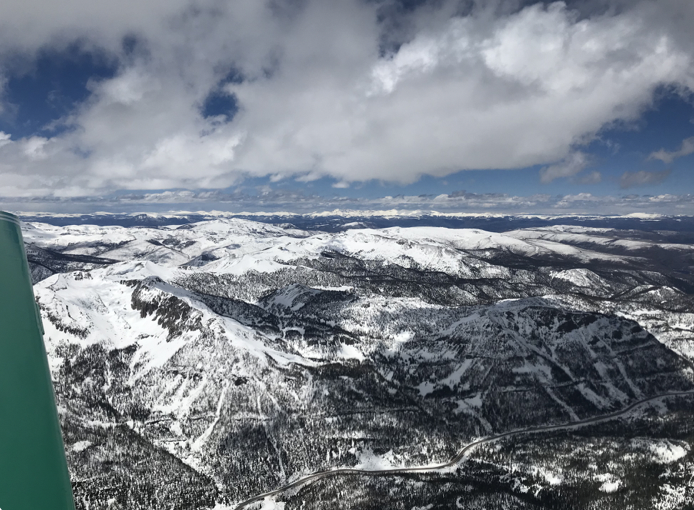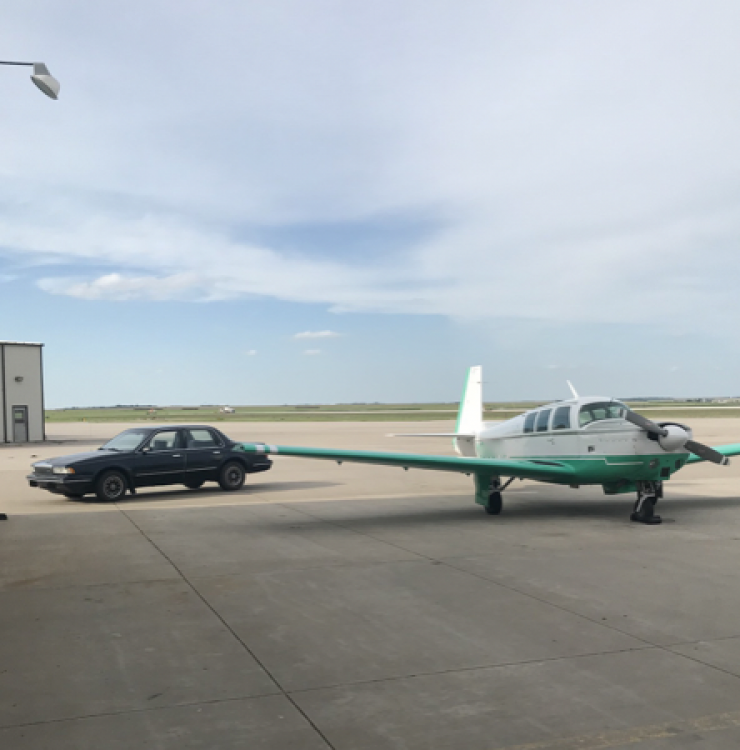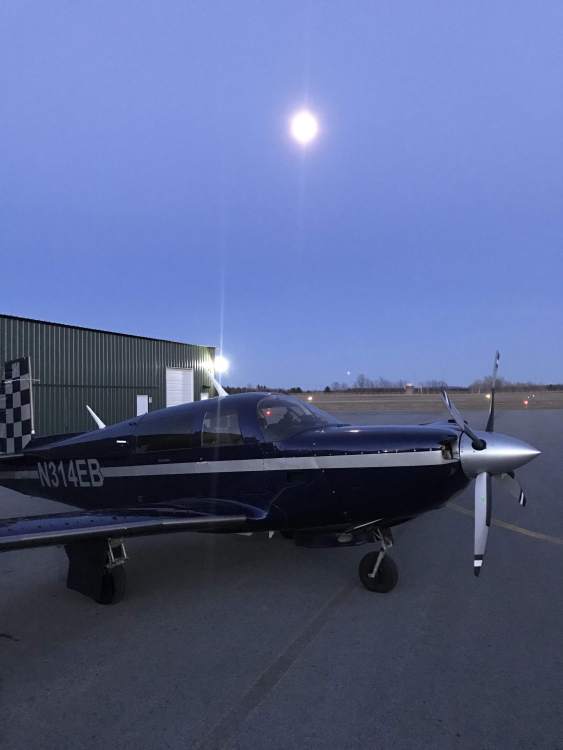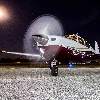Leaderboard
Popular Content
Showing content with the highest reputation on 05/29/2019 in all areas
-
5 points
-
5 points
-
Here is the latest update of my 252 Encore. I put the deposit on the equipment in late-late 2018 to take advantage of Garmin's holiday promotions. Because I have a factory 252 Encore, my vacuum was completely removed (primary and backup) for this upgrade as my speed brakes are electric and I am on the 28v electrical system with dual alternators. What I installed: G500 TXi, G5 backup, WX-500, EDM 930 to replace all my primary insturments, and CiES fuel senders. With the update, I was able to gain almost 50lbs by replacing the round gauges with glass - now up to 1110 #UL. I already had the GTN 750, FS 510, GMA 35c, and GTX 345. I'd still like to remove the KX155 with something more modern but that'll have to wait until next time. I had a big pause the first week of April when Garmin announced their G3X Certified. I was on the webinars and on the phone with my avionics shop for like two days, literally the week my bird was going down for install of the TXi. What I quickly realized, even though I could have changed over to the G3X, was that the G3X is limited to what can talk to it. My KFC 150 would not, my remote audio panel would not, and a couple of other things like a stormscope or radar. I priced a GFC 500 install but I had a hard-time replacing a perfectly working autopilot to save about 4AMU on the display with the labor about 14AMU just for KFC extraction and GFC install + equipment. I decided to stick with my TXi install and they even gave me a pretty big credit on the SVT enablement which brought the price much closer to the G3X. I had the panel made independently of the install shop and got to play around with the designs until I got what I wanted. They custom matched powder for my panel and laser eteched the plackards. It is a tight fit behind the panel but I love the design and layout. Super happy. I also went with the GCU 485 Dedicated PDF Controller. I fly a lot of IFR and don't want to be rolling a single knob in IMC in busy airspace on the TXi. So far the controller has proved very quick with changes to direct my KFC 150. The only thing that does not have a function is the IAS - right now it is just a bug on the TXi. I am hoping for a slide-in Aerocruze to be an option if/when my KFC 150 goes awry and should give me the IAS function. Right now, I think the KFC flies as good, if not better with the TXi controlling it. Altitude capture, VS, GPSS, HDG, Approach, ILS all works easier with one interface and no knob turning. A couple of not-seen additions were enabling the Telligence™ Voice Command that was apart of the remote audio panel. I thought this was a gimmic at best, but I use this in every phase of flight: "Tune to Clearance", "Tune to Weather" (ATIS or ASOS), "Tune to Ground", "Tune to Tower", "Tune to nearest Approach". It is very helpful. If there are multiple frequencies, it will show me on the 750 and let me select. The other thing that was enabled was the VNav guideance. This function is awesome. I don't get the benefit of my legacy KFC doing the actuall step-down VNav like the Garmin autopilots, but I hit two buttons to do that: VS-engage + ALT-arm and it will do the same thing. Automatically loading the crossing altitudes for STARs and or approaches is great situational awareness. I did not think this feature (built-into the GTN) was that big of a deal until it was enabled for the G500 displays. I am now having a fire-sale of all my existing equipment. Check that out here.4 points
-
Y'all need to use the MS search function. This is a thread repeated every year or so around here. All the sidewalk superintendent and armchair quarterback opines have been expressed here. More. Than. Once. What I know is that I've been flying Mooneys for 50 years. They are fun to fly. They're strong. They're fast and economical. Having seen both more than once, I like it better when the factory is open than when it is closed. If I was 36 (or 46 or 56) instead of 76 and my accountant told me I needed to spend the money I'd be calling Lee Drumheller and @mike_elliott and getting in the line which is several months out the last I heard. But what do I know, I've never owned a Toyota.4 points
-
In today's sponsored post, I'll offer some practical guidance for choosing a good limit for your liability coverage. First thing's first, as I wrote last time, liability coverage forms the base of your aircraft insurance policy and has the valuable benefit of being your legal defense. But what limit should you choose for your policy? Liability coverage for Bodily Injury and Property Damage on an aircraft insurance policy is written on an Occurrence basis. There is on overlying limit, typically starting at $1,000,000 to cover exposure for bodily injury and property damage. Most aircraft owners then sublimit the passenger coverage within the previously mentioned limit. (Most choose to limit to $100,000 Each Passenger for bodily injury). For some, this limit is the only one available. This could be due to a pilot not having much flight experience or a perhaps the age of the pilot. But if higher passenger sublimits (or no sublimits at all) are available, you should consider going with the higher limits. Some quick terminology: The Combined Single Limit (CSL) describes the maximum liability exposure that insurance company has agreed to take on for bodily injury and property damage. If an aircraft is insured with a limit of $1MM CSL, the most an insurance company would have to pay for both bodily injury and property damage in total would be $1MM. Sublimit: Combined Single LImits can be sublimited on a per person or per passenger basis. "Smooth" limits describe liability coverage that does not have per person/passenger sublimits. Here's the practical advice: Look at the value of your assets As you look at the value of your assets, you should especially consider the value of your airplane. Consider if you fly with non-spouse passengers. If so, consider higher passenger bodily injury limits Example: You own a pristine 1999 Mooney Ovation worth and insured for $205,000. Your liability coverage is $1MM limited to $100K Each passenger for bodily injury. You and a friend are flying and a mechanical failure results in a crash and injuries to your passenger. Your airplane is a total loss. Your passenger doesn't sue, but their health insurance company does in order to recoup their losses. After all, they just paid a $190,000 medical bill for your friend's 3-day hospital visit. Your insurance company writes you the check for the loss of your plane - $205,000. Regardless of what assets you had before, you've now got $205,000 more in your bank account. Wouldn't it be nice to have a liability limit that would protect this cash? The health insurance company knows you have a lot of cash from the insurance proceeds and they figure you have more assets to go along with that. It's quite posssible your insurance company reaches a settlement for $100,000 and avoids court costs. But not in this case. Unfortunately, the health insurance company drags you to court claiming your negligence in maintaining your airplane and the court awards a judgement of the full cost of the medical bills - $190,000. Your insurance company defended you, but at the end of the day only has to pay $100,000. You've got a balance of $90,000 to pay. The money is there...in your bank account since the insurance company just wrote you a check for the plane. In light of an example such as this, consider passenger bodily injury limits of greater substance, and possibly in excess of the value of your aircraft. While it's nice to have a "Smooth" limit with no passenger sublimits, some pilots do not have the flight experience to obtain this. However, most certificated pilots can obtain a higher passenger sublimit of $200,000 for a small addtional premium (normally about $75-200 per year). To give an example of what differences in liability coverage cost, consider this recent quote I received for an experienced pilot in a $182,000 Mooney M20R and respective liability limits. Note the small $83 difference to double passenger bodily injury coverage from $100K to $200K. And only $369 in total additional premium to obtain a "Smooth" limit: $1952 Total Annual premium with liability limits at $1MM/$100K $2035 Total Annual premium with liability limits at $1MM/$200K $2321 Total Annual premium with liability limits at $1MM CSL ("Smooth") $2243 Total Annual premium with liability limits at $2MM/$200K $3933 Total Annual premium with liability limits at $2MM CSL ("Smooth") In the next article, I'll discuss Medical Payments coverage. Medical Payments Coverage is not liability coverage as no determination of negligence or legal action must be taken in order for the coverage payments to apply. Parker Woodruff Airspeed Insurance Agency LLC 214-295-50553 points
-
Great summary. Here's some actual APS data for one operating condition for one (unspecified) engine. It's a little hard to read, but the original wasn't all that good. The graphs are internal cylinder pressure curves for the same engine at the same power output with the only difference being mixture. Left graph: 27.2"/2500 rpm / 75F ROP / 390F CHT / 18.3 gph / 244 bhp / 140.5 BMEP / ICPmax= 825 psi Right graph: 29.9"/2500 rpm / 50F LOP / 365F CHT / 16.4 gph / 244 bhp / 140.5 BMEP / ICPmax= 740 psi Note that BMEP is not a "real pressure", but an average. It is equivalent to torque times a constant. As shown below, you can achieve the same BMEP with different shaped curves. Skip3 points
-
Not until around the 18th-20th. Plan on arriving in NC the 14th or 15th depending on weather and will be heading back west the 20th to allow enough time for detours and delays and still get to work Monday morning. I'll start a thread and hopefully will be able to arrange some meet ups along the way.3 points
-
I had to take AL up for a spin. Winds gusting to 24. Little AL was getting blown all over the sky and the wing leveler was getting a workout. Funny enough it was smoother than the Boston Whaler on the lake a couple days ago. First landing was acceptable. Bounced the second one. came in a little hot. Thought for a second about going around then just thought I could land it like pilots are supposed to. Then it all came together. Not pretty. Have not bounced one on a long time. No cameras involved, no sheet metal bent.3 points
-
Its obvious the plane was not trying to land , by the pitch angle , also the impact was 12 miles from the video....2 points
-
2 points
-
You know your computer (phone) can read your mind.. It knows you want to look good down there for your cruise!2 points
-
@dcrogers11 what a ridiculously fantastic hangar !!! That is what my vision of Heaven looks like!2 points
-
He does, he came directly from the Mooney Flyer list of instructors.2 points
-
2 points
-
See if @Bryan wants to post some pics of his old plane and its instrument panel.... It might win a title for Mooney centerfold in Aviation Consumer’s mag... Best regards, -a-2 points
-
-a-, The digital version hasn't appeared on their website aviationconsumer.com yet, but here's the info on the paper copy: Mooney 231/252 It's time again to look at the used Mooney M20K market for the Aviation Consumer Used Aircraft Guide. We want to know what it's like to own these speedy travelers, how much they cost to operate, maintain and insure and what they're like to fly. If you'd like your Mooney to appear in the magazine, send us any photographs (full-size, high-resolution) you'd like to share to the email below. We welcome information on mods, support organizations or any other comments. Send correspondence on the Mooney by July 10, 2019 to: Aviation Consumer email at: ConsumerEditor@hotmail.com Cheers! Terry2 points
-
It takes more than removing a seat to install a parachute. The descent rate with the parachute is too great for a touch down that won't break your back without additional shock absorbers. In the Cirrus, the landing gear and seats are designed to crush and cushion the "landing."2 points
-
Looking good! Just flew into Catalina yesterday and have a pirep. No more potholes! Its got striations between segments of concrete so you’ll hear them but not a big deal. No more hump in the middle of the runway. It’s now a fully up sloping runway with a 2.1% uphill grade on landing runway 22. So now very easy to land 22, even bigger planes have no problem. But would NOT land on rwy 4 given the steep downslope. If there’s a headwind strong enough to keep you on a steeply down sloping runway 4 it would be possible to land 4 but if winds were that strong I personally would be rethinking about going to Catalina that day. RWY 22 is the one that should be used. Don’t try rwy 4! (Someone did Saturday with a very expensive outcome) Parking is a breeze. Yes it’s on flat dirt with nice rebar lines attached so you can tie your plane to it easily (bring rope). Just like before but no chock rocks present or needed. All in all, great runway, now easier to land (rwy 22) and would be great if we can get a group going!2 points
-
The first thing Mooney needs to do is drive down the labor costs in building their planes, by about 30% or more. Then increase useful load. Parachutes do nothing for me. Taking out a seat would make a plane I'd never buy, even on the used market after significant depreciation. Pull the red handle and give up complete control of direction and descent rate? I'd feel safer with an ejection seat and small chute. What sells Cirrus isn't the chute, it's a full-blown "lifestyle" marketing campaign aimed an aviation newbies, showcasing the automotive-style interior. The chute caters to the fears of their uniformed, aviation-uncaring passengers . . . . .2 points
-
FWIW I am aware of a fire that burned a multi-million dollar new yacht to the waterline. The suspected ignition source? Lithium Ion batteries in an electric bicycle that the owners kept in an aft locker. Keep that in mind when making a decision about personal transportation in your Mooney.2 points
-
Day 9: Back home: last update for this trip! KDTC > KFFT (Fulton, MO) 2.4hrs 6am IFR departure to get the hell out of Dodge City, KS. Quick fuel stop in Fulton, cheapest gas of the whole trip at $3.60/gallon. FBO had keypad access. No crew car, but no biggie. Not hungry yet. KFFT > KIWH (Wabash, IN): 1.9hrs Beautiful small town airport. Fueled up at $4.10/gallon and then went in. They had a huge truck as a crew car they let use to get into town and we went to a little restaurant called the "Broken Egg" and had a great tenderloin sandwich. Love those small town airports you discover on long trips. KIWH > KIAG (home base - Niagara Falls, NY): 2hrs Some thunderstorms formed off the front, but we were able to depart and pick up an IFR clearance find an opening to get through. Great groundspeeds on the way over and we were home by 4pm. Not bad for making it across the entire country from California starting from yesterday. What would have been a 20+ hour drive out of Dodge City, KS only too about 6.5 hours of Mooney time.2 points
-
I was going back and forth about whether to put in a skyBeacon and rely upon my old Narco transponder or bite the bullet and put in something from this century. Aircraft Spruce had a special for the GTX 335, GAE12, and GA35 plus a wiring harness. I asked my AP/IA (still getting to know the new one since moving to KFUL) if he had supervised any owner installs. He asked if I had done any electrical work on planes. I told him I had removed old avionics, made and run RG400 for the radios, replaced the ignition switch, starter solenoid, voltage regulator, and random stuff like bulbs. In theory this would be an easy install, just mount the tray, run the wires, and hook up power and ground. His response was, ok, let's do it. I reached out to @Aerodon to see if he could be Spruce's deal. I had bought a SL-40 and EDM-830 from him about 18 months prior. He gave me a price, I placed the order, and reserved my rebate just in time, five days before they ran out. I started pulling seats, interior panels, and the right side of the instrument panel to get ready for when the box showed up. There was more than once when I had the thing all apart that I thought, "Man, I have to remember how to put it all back together." First snag was when I found that the space above the #1 radio between it and the audio panel where I was going to put the transponder was not quite tall enough and required moving the radios down. I couldn't move the audio panel up because of the bars behind the panel. Other than it taking a lot more time than I thought the installation went smooth. My AP/IA put in the doubler for the GA35, it was going in place of the old loran antenna that had been installed with some jagged holes cut (not drilled) through the skin with no doubler sometime many years ago. The transponder check was perfect, it passed the ADS-B checkflight and I submitted the rebate on Saturday. All total I think I had about 21-22 hours in the install. The avionics guy that did the transponder check said most of the shops around here are charging 14 hours for a simple install that isn't connecting to a bunch of other things so I think I came out okay with the time I put in. If you want to read "the rest of the story" you can do that here, https://intothesky.us/2019/05/25/gtx335-installed-2020-compliant-and-preventative-maintenance/ I also had my AP/IA replace all the control cables. I couldn't find where the throttle and mixture had ever been done in the logs and the prop cable was done back in 1990. The new ones are smooth as butter. A few pictures, more pictures if you go to the blog post.1 point
-
These come with the latest software load , and are adsB out compliant , will work with GTN series , and G 1000 series navigators , These were bench tested and tagged by a garmin dealer .. Alan 856 419 52091 point
-
Just renewed my donation. 7741M is long sold and gone, but this site has provided me a wealth of information over the years and certainly gotten me out of a jam more than once. I hope to see it continue to help others. Never know when another Mooney might be parked in my hanger.. Sometimes I sure miss seeing the backward tail, or maybe tired of everyone else's tail being backward . Tom1 point
-
That sounds really bad. I have been with the same woman for 40+ years and I don't understand your difficulty............1 point
-
Just thought I'd use this thread to share updates on a cross country flight I'm taking in the Mooney for the next ten days with my wife. Hope to share any useful information and just share the adventure. Follow along if you'd like or don't :). The ultimate destination is up in the air, initially it was going to be Mt + Rushmore + Yellowstone from Niagara Falls, NY, but with the weather patterns being what they are, I kinda tossed the plan due to Yellowstone being a mix of snow and rain for the next week. Day 1: 5/16 evening KIAG > I48 (fuel stop for cheaper CB fuel) > KOSU (Columbus, Ohio) [approx 2hr 30min, some headwind] The flight started off with a bit of an issue with an electrical smell that came and went. My strobes weren't working properly on landing (only have about 5% intensity). I talked to maintenance at KOSU when I landed and they think it might be the strobe box. Luckily, I had scheduled an oil change at KOSU (since I plan to fly for about 30-40 hours on this adventure) so they were at least expecting me for something. The bonus is they put me in a hangar and some nasty thunderstorms came through a few hours after landing. They switched out my Whelen power box (they somehow had one in stock) and my strobes were back up working for the next day and leg of flight and no strange electrical smells, so I think I smelled my strobe power box hitting the fan. Day 2: 5/17 In Columbus, OH - I had a fun day and ate lunch at Brassica (very delicious spot for fast casual food) and spent the evening at the Sonic Temple Music Festival celebrating my birthday and seeing System of a Down live for the first time. Saw Avatar perform too and they were very good live. The festival was lots of fun and my wife experienced mosh pits breaking out around her for the first time. I'm glad she put up with it :D. Day 3: 5/18 KOSU > KVLA (CB fuel stop) > KCPS (St Louis) [approx 3hr 15m due to 30+kt headwinds) Cruised over VFR at 10,500 to KVLA since I didn't want to deal with rerouting and let my wife learn to fly a bit in cruise (she did great with holding heading and learning turns on the way). Lots of buildups and a large wall of t-storms in front, but they should pass quite nicely through the night and leave some nice stable air in their path. KVLA was a nice small airport with avgas at $4.10 and a stocked fridge with a little pilot-accessible door. It was very quaint with rocking chairs up front and had a courtesy car parked, probably with keys somewhere--but since it was a quick fuel stop, we didn't bother looking for them. I had my wife pretend she was helping fuel the plane as a photo op (hint: she actually wasn't). KCPS seemed nice when we landed. They waive the ramp fee with 15 gallons of expensive avgas (but they were kind to make an exception and waive ours with a top off and we took about 10). Overnight parking is $15 and they charge a $7.50 security fee on top of it. They had a rental car on the field which we rented for the day. We did a little flyby of the city before we landed (our first time in St Louis): We got to St. Louis fairly late, but had an awesome day, which we started by eating a well deserved lunch+dinner at Pappy's Smokehouse (full slab of ribs with added brisket + two sides pictured): After our dinner, we spent about 3 hours playing at the City Museum, which we thought to be one of the most unique places we've ever ventured in. If you've never been, imagine a maze that you can climb through, slide through and even crawl into old airplane cockpits that are housed on the 8th floor. It brought us back to feeling like we were children (in a good playful sort of way) and we both enjoyed our time there. We capped off the night with an ice cream cone at Jeni's in St. Louis. Tomorrow, we think we will fly from KCPS>KHOT to check out the Hot Springs National Park in Arkansas for a few hours before continuing on to Austin, TX (maybe the same day). We've been to a few cities in TX before, but never Austin so we are excited to check it out. Recommendations are welcome! The rest of the days we don't really have a solid plan and truly are winging this adventure, I do know it would be neat to fly the Mooney to Catalina Island on the west coast so ultimately hoping to make it that far west. Any suggestions, comments, etc. are welcome! If any Mooniacs want to meet up along the way, we are totally open to it!1 point
-
Well, that can vary widely, and a lot of it depends on installation. Option 1 (330ES upgrade, GDL 52R, FlightStream 210): IIRC the 330ES upgrade is about $1500, the GDL 52R is $1200, and FlightStream 210 is $1000, so $3700 in equipment. Option 2 (GTX 345, FlightStream 210): GTX is $5K, FlightStream is $1K, so $6K. $2300 difference in equipment, but you should check with your installer to see what the difference in installation cost would be.1 point
-
I run LEDs; two whelen taxi lights for the wider angle and two whelen landing lights in my tks ovation. Whelen told me the only difference is the corrugation of the front lense to provide a wider illumination angle for the taxi light. I fly with the landing lights off and the taxi lights on. I absolutely turn on the landing light on final as I have spotted animals on the runway environment on short final. I really like the fact that the LED lights do not melt off the ice as it allows me to gauge how severe a challenge the TKS system is working against as the rest of the plane is ice free and I have had up to an inch of ice covering the wing lights. I found the comments about rising temperatures and declining output to make a lot of sense and was surprised at how heavy the heat sink is on the back side of the whelen LED lights is which is now explained. My take away is with longer service life and lower power draw I'm keen to have the taxi lights on when the plane is airborne. I now have six hundred hours on the Whelen LED and can recommend them.1 point
-
The Aviation Consumer, in their June 19 issue, is looking for a few sharing pilots to send in their stories for their Used Aircraft Guide, along with pictures. More info on the back page of the magazine.1 point
-
My plane has a similar switch. It does take a little bit of getting used to press the button to switch NAV sources but it becomes second nature after a while. That being said in a stressful situation I can easily see this being forgotten introducing some confusion. Been there, but quickly realized the problem. Sent from my iPad using Tapatalk Pro1 point
-
I think it's interesting how that's different for different people. Some find the presence of the tower helpful and assuring and others find it adding to the burden. I'm happy either way but usually feel a bit safer at a towered field. Listening to the two-way conversations with everybody seems to increase the opportunities for situational awareness, and it's less likely that somebody is going to be sneaking in nordo.1 point
-
Anyone who has been interested in this discussion - i recommend checking out this tutorial - http://www.avclicks.com/Flash2/To_the_Rear_March/index.html Basically agrees with both ideas presented by Bob and myself above. This shows you the the actual details of where you are protected once you reach the IAF, and where you should begin the descent, as well as consideration for which way to turn. At the speeds we fly approaches (120 to 90 kts) you can see we have no concerns with turning in either direction and not staying safe.1 point
-
For programmer/computers with mod code AC/AC or higher, automatic GS arming will occur after the following conditions have existed for 1 second: APR Mode Engaged ALT Mode Engaged Navigation Flag Out of View Glideslope Flag Out of View Localizer Frequency Channeled Aircraft within 50% of Localizer Centerline Aircraft more than 10% Below Glideslope Centerline It has always been a challenge to satisfy the needs of an autopilot during the approach phase when you are rushed. I was commissioned to do a recertification flight in Mananas, VA. years ago. It was in a Lear 60, I had to stand between the pilots to verify accuracy after a service bulletin. The approach had what seamed to be a 30° turn to the right pretty close to the airport, the pilots got a kick out my reaction to that last turn that close to the water.1 point
-
OK, so it wasn't today's flight, but rather Thursday. You'll have to forgive me for that as I've been a bit busy and preoccupied. First up is a picture of my house... I always wanted to live on a private island, but this wasn't quite what I had in mind! ... and here is a picture of our factory. And last... our downtown area. OK, it's not flying related, but this was the result of our day 1 preparation efforts. There are about 5,000 sandbags in this picture. By the end of the week, the team I led filled and placed around 8,000 bags to keep all the homes and businesses dry.1 point
-
Thanks all...yea....been seeing those electric unicycles speed around town...looks fun but Im likely to break something...the boards are easier and safer to ride and Boosted makes some of the best!1 point
-
I bought a battery operated skateboard for my nephew. He says it goes over 20mph and will go all day without a charge. The hills around his house are no problem. It’s pretty light weight and has a wireless remote that includes a brake. Of course he only weighs about 60 lbs. Your mileage may vary.1 point
-
1 point
-
List of airports: KIAG 4I3 KOSU KVLA KCPS KHOT KEDC 27R KPEQ KTCS KDVT KUDD KPGA KTAD KDDC KFFT KIWH KIAG Routing wasn't direct for all these places, due to mountains, grand canyon flyover, some IFR routing, etc, but that will give you an idea of how we went. Some of the shorter stops were due to getting some cheaper fuel before landing at a place with expensive fuel. I think total flight time was about 30 hours. I can also post total cost of fuel for the trip once all the pending charges are posted for anyone curious. As far as the high altitude short legs, I wouldn't say it felt like we were climbing most of the trip. It may sound like getting up to 13,000 takes a while, but when you start at 6,000 already it's not all that bad. There were only a few higher altitude legs toward the end (KPEQ>KTCS, KUDD>PGA>KTAD), otherwise I was cruising between 6-9k which is typically where I cruise with the G.1 point
-
Day 8: The start of an epic journey back First leg: KUDD (Palm Springs, CA) > KPGA (approx 2.55 hrs with Grand Canyon fly over) Transiting the grand canyon was fairly easy. The important thing is to have the sectional (zoom in on Foreflight and it appears). I plugged in a few waypoints that are in the GPS as well: VPGCF VPGCC to follow the dragon corridor north. Going northbound you need to be at 11,500 and southbound at 10,500 (or above, etc). There was one point where I had to descend lower to remain VFR, but ATC said going down to 10k was ok at that one particular point I was at. All in all, a fairly easy flight if you are vigilant to avoid the no fly-areas. ATC did ask me if I was familiar and quizzed me on what route I planned to take, but seemed satisfy when I told them I was taking the dragon route to transition. The airport in Page, AZ was wonderful. Beautiful views on the ground too. Inexpensive full service gas and courtesy vans to grab lunch. So much activity and 3 FBOs. I went to Classic Aviation. So many Mooney's parked on the ramp. I made friends with a gentleman with a Rocket who was heading back to Missouri at Page: He offered my wife and I a free room in his resort for the night in Missouri. The original plan for today was to fly there, but we ended up in Dodge City, Kansas due to the storms. I also saw another plane with sort of a similar color scheme parked on the ramp. Does this belong to anyone here? We went into town and got some crepes at a place called Crepe Canyon and then shot up to 13,500ft for our next leg. Initially, I didn't think I'd go a direct route over Colorado, but I spoke with a weather briefer this morning at 6am who seemed SOOO excited for the weather I had for this and gave me some suggestions for passes in Colorado. I kept evaluating as the day went on and it seemed doable, so I shot out for Wolf Creek Pass after Page, AZ. Second leg: KPGZ > KTAD (Trinidad, CO) (2.5 hours) At one point, I was up at 14,500. Highest I've taken the Mooney. Crossing the peaks was intense, but going eastbound it wasn't so bad. Had a killer tailwind, the bumps were manageable and I just felt very fortunate to find such a nice day to do this. Trinidad, CO was an amazing airport thanks to the man who works there who has been there since 1989. He was so hospitable. Came out to fuel the plane, even offered us some of his own snacks like a banana. Fuel price was 3.85 a gallon, the cheapest I've had so far on this entire trip. Unfortunately, there was no crew car and the town was 14 miles away, so no food here, but we really enjoyed a small rest break. Third leg: KTAD > KDDC (Dodge City, KS) (1.4hrs) Went up to 11,500 due to turbulence. I guess I was used to the high altitude flying by now. It was still very bumpy for the first 30 minutes of the leg. Almost moreso than it was for the entire flight over the big mountains. We landed Dodge City, KS to take the crew car for dinner and were going to continue east, but at this point a huge line of massive thunderstorms procured our path, so we called it a day. The airport was really nice. No overnight fees, they let us an old Buick overnight (their crew car) for free. The plan is to hopefully make it home tomorrow.1 point
-
Mathematicians and their high tech photo-trickery.... I prefer anything with a slanted windshield, and the tail not only put on right, but trimmed for max speed too! Got to look fast while on the ground... nobody is going to see anything more than a blur when a Mooney is flying by... Unless the photographer is also in a Mooney... Coolest looking Mooneys are flying in formation... Coolest Looking Mooney.... The Mite.... Even the M20R looks like the mighty Mite.... a Mite on steroids. A place to see the Coolest Mooney... Find the Mooney fly-in nearest you... nearest doesn’t really matter... Mooneys are good at traveling... Go Mooney! Best regards, -a- PS... The Rocket isn’t quite capable of vertical climbs beyond 5k’.... But the first 5k’ go by really quickly....1 point
-
I’m getting excited!!!!! Any weekend in July work for me. Sent from my iPhone using Tapatalk1 point
-
Great input, Dev! Signs of blow-by 1) color... oil gets discolored quickly, dark brown to black in a few hours. 2) Smell of exhaust in the fuel... as in, when you sniff the oil on the dipstick, it smells like exhaust. 3) appearance after flying... when you check the oil level...lots of bubbles making the oil look a bit foamy.... Blow by can pressurize the case and push more oil over-board... case pressure can be measured by your mechanic. An ordinary type of measurement... oil foam has a tendency to increase its volume, helping it reach the case vent... Faulty rings and worn cylinder surfaces... can allow oil to enter the cylinder... Things that can be done to identify A problem cylinder... dental camera.... look for health of the cross hatchings that are supposed to be there... if they are smoothed Or deeply scratched... this is a sign.... leaking valve guides, get good pics of the valves... see a good pizza? pulling lower plugs can also find oil that has made a mess inside a cylinder... Oil exiting the exhaust pipe... a quick look can determine if oil has been getting out an unusual way... Hot cylinders have a tendency to wear faster than the cooler cylinders. A broken oil ring can be a cause for loss of oil... it will come with a messy cylinder... Show pics... cylinder surfaces, valves, lower plugs, foamy black oil.... PP thoughts only, fuzzy memories... all from an ancient, well worn M20C... not a mechanic. Best regards, -a-1 point
-
I use about a quart of oil every 8-9 hours on a motor that was 100 hours after factory rebuild, so every 5-6 hours would still be quite good if not for the fact you are suggesting there was a more rapid increase in oil use recently. i'm guessing you keep the sump filled to the same quantity and you have not changed that recently? I used to keep 7-8 quarts in the sump, now I try to keep 6 quarts in the sump and have had noticeably less oil out the breather.1 point
-
1 point
-
1 point
-
My fuel flows have never been as high as book. I typically fly at 18/19k. 32/2400 ROP with 20.5GPH and see 210/215'ish TAS. Some would say that might be pushing it, but my compression numbers have been continually been climbing over the last few years (probably because I'm flying often) and I'm no longer getting the exhaust film on the belly when I was first trying to baby it, and leaning the heck out of it. These settings keep the CHT's around 380 and TIT around 1530/15401 point
-
Parker makes an excellent point. Send him an airplane ticket, spend a few hours with him, and really learn how to fly an Encore the way it should be flown.1 point
-
Thought experiment... throttling-up for takeoff (no matter how fast you feed in the throttle, certainly faster than 1" per minute) or flying from dry conditions into rain (especially cold rain) will change your CHT's faster than reducing MP at any rate you try. Why would you not shock cool or shock heat in the first two scenarios but shock cool by reducing MP? www.advancedpilot.com is the best place to learn all about engine management as they teach you what is going on inside the engine during all phases of flight and mixture setting. You'll learn how to use an engine monitor, and how to diagnose and troubleshoot maladies. Then you will have the knowledge to operate your engine smartly and efficiently. That kind of knowledge goes a lot further than a recipe from the internet or a Mooney instructor (or test pilot) that doesn't have that knowledge. It is a shame that we can get licensed knowing so little about what the engines are doing in my opinion.1 point
-
I owned an Encore conversion as well. Typically cruised between 29" and 31". No problem bringing it straight back to 25" or even 20" when starting the approach. Whoever came up with these supposed linear relationships between 1" and 1 minute & also 1" and 100 RPM (for the "don't fly oversquare types) is perpetuating terrible flying technique. You are pilot in command, not your engine. Too many pilots put themselves in a bind while trying to make approaches and have difficulty flying in a logical fashion because they're caught up on these blanket rules of thumb. There's my rant.1 point




